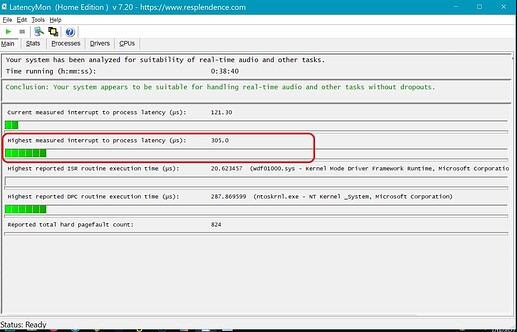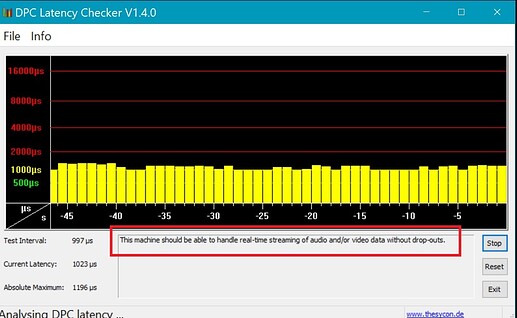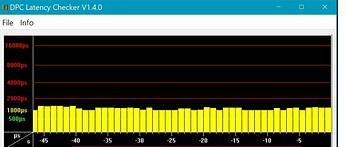in the VST world do ppl talk about quality? They certainly do for reviews of paid products in magazines like SOS.
Bit off topic…but…
VST’s are definitely being reviewed. Also in a more ‘structural’ and ‘professional’ way, e.g. in magazines, articles and related video reviews and such. Especially commercial ones. My point is that there are no real ‘entry level’ criteria preventing the lesser quality stuff from entering the eco system. Quality may vary wildly. Especially amongst well intended free offers. But, there are definitely (many) ‘free’ gems to be found. As well as disappointing commercial products.
Some may functionally surpise (positively or negatively). Some technically (e.g. stability or performance). Price is not always a good indicator for value (quality).
oh, for sure, I get you. maybe it’s “grass is greener”, but it seems like VCV is a little more like the wild west. I’m sure there are plenty of not great sounding or performing VSTs, but in the end ppl don’t say “cubase sounds bad” or “reaper crashes all the time”. Whereas it seems very common for ppl to believe those things about VCV (neither of which is remotely true imo), When the real situation is likely to be the individual modules being used.
Possibly drifting further off topic…and generalizing…
Considering what I encounter all the time in my professional and personal life…but also trying to stay out of Lounge territory…
And oh…alas, also first feeling the need for this short interlude to prevent some unproductive and unnecessary flamewar:
With due respect to all who read what is below, I don’t mean to disqualify anybody, nor elevate anyone else (including myself). Just pushing towards dichotomies (extremes of a spectrum) for arguments sake and using some common rhetorical tooling to convey my opinions.
So…
First of all, opinions (however explicit) are not always supported by valid arguments or logic. But that doesn’t stop people to share or even push their opinions or ask ‘suggestive’ questions (implicitly conveying an opinion).
Since we (should?) want an open discours, we should not simply ignore or crush opinions that seems to conflict with our own held beliefs. This the danger of the ‘confirmation bias’.
But as with all opinions, these opinions should instead be evaluated (first).
First of all to see what these opinions actually are, what they are based upon, and whether they might somehow add value to common knowledge, frames of reference or value sets and such.
Or…to simply to see if we can help someone out, who’s running into some concrete issue and wants a solution for that. But might communicate this cry for help in a way that introduces misperception and miscommunication. Like this ’ sound awful using ASIO’ thing.
Alas, it’s pretty hard to evaluate all opnions for their merit. Especially if you do not have the necessarry time/knowledge to determine the value of the opinions or arguments. So, assumptions must be made, but also be maintained.
This is especially true, where complexitiy lurks and many have some (mostly passive) exposure to the matter (whatever the matter).
Now, consider the relative ‘obscurity’ and ‘complexitity’ of modular (the gory details) compared to the much more ‘known’ and ‘simpler’ world of DAW/VST (with its many abstraction layers).
It’s easier to have and verbalize opinions on less complicated stuff. Things become easier if complexity is obsured/hidden by abstraction layers.
I guess this is why a specific synthesizer or effect in VST is easier to be viewed as an abstraction layer you can have a seperate opinion on (ignoring the complexities within and around). And why VCV Rack (including all seperate modules within) is sooner seen and evaluated as a whole in generic terms. Generalizing way beyond this, this is why slogans work so well.
Before I go on…again, as a reminder…not disqualifying or elevating anyone…just using rhetorical tooling.
When complexity is involved then you may soon recognize elements of the Dunning-Kruger effect.
The Dunning–Kruger effect is the cognitive bias whereby people with low ability at a task overestimate their ability. Some researchers also include in their definition the opposite effect for high performers: their tendency to underestimate their skills.
Simply put…the more you know, the more you discover there’s ever more you don’t know. And that ‘objectivity’ in the end is ‘subjective’ due to lack of knowledge/certainty.
Loads of research supports this Confidence vs Competence relation, so, I accept it. So, personally I believe that fallibility, uncertainty and therefore modesty are pretty important concepts. Therfore I mostly stare into the Valley of Despair…
Not be be ignored is another bias: Hanlon’s Razor (again with all due respect, just for arguments sake). Hanlon’s Razor is about intention.
Hanlon’s razor is an adage or rule of thumb that states "never attribute to malice that which is adequately explained by stupidity. "
Sure, there’s obvious evil badmouthing and such. But bad things might also come from good intentions. Sometimes all sorts of explicit, suggestive or provocative words or opinions hide good intentions. So…it is a good idea to also investigate the intentions.
Maybe assume the best (but fear the worst) when dealing with opinions and intentions?
Anyway…
- Not all opinions are equal
- Intentions are a relevant factor in any discours.
Agree. I have mentioned this before, it’s a shame because it can be a learning opportunity and help fine tune a developer’s craft. It is not critical criticism, but productive opportunities for success that will be for everyone.
I personally believe the review process should be done, perhaps in a “committee style format” with the developer present during the entire process
Exactly, this can be a frustrating process and ultimately, be a waste of time. I am not a developer. I am a simple user trying to use Rack as an instrument in my projects. It can be, very disappointing
Hey @fpssdave, your thread has gone in a few different directions.
This may be very helpful for you. I am not sure if you are aware of these tools, but besides the Thread comments earlier, which one needs to be aware of how these work, at least in principle, you also need to make sure your system is handling real-time audio and other tasks without dropouts.
This is more a holistic approach if you will, but you need to know what else is going on, when working with real-time audio on your machine. What you have describe (been there, done that), obviously, there are other things going on with your system. It really isn’t going to matter how big, fast and furious it is, other things can and will cause you headaches.
If you are not familiar with, you should be with a utility called Latency Monitor. LatencyMon checks if your system is suitable for handling real time audio by measuring DPC and ISR routine execution latencies as well as hard page faults. Here is a source link for you: https://www.sweetwater.com/sweetcare/articles/solving-dpc-latency-issues/# (apologies, if you already know all this @fpssdave, perhaps it may help others.)
For example, preparing for this comment, I ran this utility yesterday, again, just for documenting purposes. It “red-lined” immediately. My shock was then filled and replaced with fear - what the what?? SEE the article from Sweetwater – ugg!! This is kinda what mine looked like. I was shocked.
A couple weeks ago I did an Windows update (loathe) and IT decided, I needed my hardware Ethernet port active, even though I only use WiFi (not when creating music). Many drivers (video, networking, printers…) networking devices are extremely prone to give you headaches. So, I saw it was active, deactivated the device, and I was back happy again.
… the red flag to watch for, is in the image red box, see red, you have an issue. I did, the Ethernet port was active. I ran the test then after disabling for almost 40 minutes, the image here is the result. It also provides valuable reports you can analyze, find and discover, then fix if you can, faulty drivers, or disclose other things causing you issues that’s giving you headaches. You ultimately want this monitor to stay in the green.
Granted, there is a lot here to unpack, but it is the nature of the beast, working in Windows. It is just a fact. Here is the results running the test, on my machine. LatencyTest 031822.txt (10.5 KB)
This is where I first stumbled upon all this tracking down my own issues several years ago, CPU Performance vs. Real-Time Performance in Digital Audio Workstations https://www.youtube.com/watch?v=GUsLLEkswzE . This has tons of information - very much worth a watch. Take notes…
The Sweetwater article also mentions this utility, as does the above video:
I hope some of this helps point you in where to look for bottlenecks and problems. When you put on top of what I just shared, and what @Squinky has pointed out . . . there is a lot that can be going on, why something is running badly, sounding awful and causing plethora audio anomalies. It is not, just one thing or a cpu load question. Give me a shout back here or DM, I will help where I can. Cheers, g~
Thx gtilde - and I don’t mind the thread wondering off in different directions, it generally means the original post had some meat to it. I had the original Latency Mon so I updated it and have had it running for a bit now while also running a couple different patches on VCV. The video you linked to is excellent. Latncy Test Mar20 2022.txt (14.8 KB)
@fpssdave glad you found the video helpful too
We’re you able to isolate ndis.sys, and what device(s) are using your USBPORT.SYS? Have you tried to deactivate the hw for your NIC and rerun, both Ethernet and Wi-Fi
Apologies but most* of that went right over my head…
(*ALL)…Though I will investigate in depth at some point this week. I’m in a band and we are learning some new songs and I’m very much down the rabbit hole that is VCV Rack - every corner I take has something else new to understand and earn about.
…it’s fine, please, no worries. It is a lot to take in. Please note though, what I talked about regarding latency and all that fun stuff, it deals with your entire machine. Knowledge of it is not required to enjoy Rack. That said, that information can help discover how Rack will/could/is performing, or any other music making application on your machine
Rack by itself, modular synthesis, is enough to take in, besides all these other things. Fun Times!!
The two items I mentioned, are what stuck out from the txt file you shared…
Anyway, please do not hesitate, ask me to repeat and explain - I will be happy to do so the best I can . . . you can also direct message me too
… have great fun in rehearsals this week
(edited for readability)
I’m afraid I was the main culprit in the derailing…widening the scope considerably…mainy because your original post and the consequent way towards a cause and a solution definitely had some meat to it.
FWIW
I wrote to Thesycon Software Solutions to check on updates for their utility a few days ago . . .
They wrote back in short:
- The DPC Latency Checker doesn’t work correct on Windows 10/11. Because of changes in Windows 10/11 it is not possible to solve the problem. The support is discontinued for this reason.
DPC Latency checker has been deprecated if you are running Windows 10/11
However, you can find latest updates to the Latency Monitor here:



